#balkan culture
Text
The Crew and Bulgarian cuisine in Varna
First off, Jonathan. I think he would want to try Shkembe (Bulgarian tripe soup), and love it. Tripe soup isn't common in England, but we know he is open to new experiences and that he is daring. Plus, he used to be poor and it's likely he's been having similar cuts of meat, which was most affordable in England. Tripe soup has variations in Southeastern Europe and the Middle East, but the Bulgarian version adds paprika in particular and, in fact, claims the more paprika, the better. (imo it's up to your spice taste)
Is he trying any in Varna? I say yes. Because tripe soup places are traditionally open all night and morning because they're commonly visited around dawn by graveyard-shift working-class people, sailors, and people who drank the night away. Because it settles the stomach.
After Mina's dawn report, he sometimes goes there to eat, after another night of being up with Mina. He's not been very hungry, but he tries to eat... He needs his strength. He of course asks for extra paprika. He needs to feel somewhat alive.
I see Mina liking fish, and Varna is a sea town. I base this on her surname and her strong affinity with the seashore, mostly. She would really like deep-fried sprats (tsatsa), herring-like fish with lemon and fries. Sort of reminds her of home with its fish and chips. She would like the various Black Sea fishes like shad and goby, and mussels. She avoids going out when she's awake, but Jonathan knows her tastes and brings her seafood.
She tries to eat like a normal human, for him. It gets less and less easier.
Van Helsing may have tried a few Balkan dishes before but I think that he would like local Lozomi Sarmi. Rice/veggie/herb-stuffed grape leaves are a staple starter in the Balkans. I see him in general preferring vegetarian dishes but he'll have some of the ground meat stuffed ones. Dipped in Bulgarian yogurt.
Quincey is a meat lover to me and I can see him loving Meshana Skara, aka assorted meat dish, that includes meatballs, the famous kebapche, steak, and pita. Arthur isn't a lover of the local cuisine but he will try it if his friends are having it. It's what he usually does in their travels. But he eats plenty of Bulgarian yogurt, Kiselo Mlyako. It's sour, and he prefers it that way, than adding honey.
Jack likes trying new things and assessing them, he'll try almost anything once. It's autumn and getting chillier at the seaport, so he opts for warmer food like Gyuvech, a vegetable casserole with beef and potatoes in red sauce.
His insomnia sometimes brings him to overnight restaurants. Sometimes, after dawn, he sees Jonathan there. They sit and eat and smoke together, mostly in silence.
#I have regularly tried all variations of those they are so good#in general balkan and middle eastern cuisine rule#dracula daily#dracula#mina harker#jonathan harker#jack seward#arthur holmwood#quincey morris#abraham van helsing#bulgaria#balkan culture#balkan cuisine
142 notes
·
View notes
Link
Putting my anthropology degree to good use and compiling a bunch of credible sources documenting real life Balkan folk magic traditions in one easy, convenient article!
I know so many sources about witchcraft are inaccessible and or culturally appropriative, so I did a lot of research and wrote this easy to digest article covering some basics of South Eastern European folk belief. I’m thinking of writing more articles about various European folk traditions (when I have time!) so this will be an ongoing project. I hope you learn something new and meaningful to incorporate into your craft 💗
An Introduction to Balkan Folk Magic
Like many old world practices, traditional Balkan magic has historically been carried out by cunning folk, healers and seers who were gifted in communicating with the “other world”. These community healers practiced generational family knowledge, remedies and prayers passed down from elders. It is important to note that most cunning folk did not view themselves as witches, rather they were seen as conduits for god’s miracles. Within a historical context, these practitioners very much considered themselves Christian, Muslim, or Jewish. Elements of paganism lingered in many rural regions, though they were absorbed into the social-religious fabric of the day. Rituals performed by cunning folk were typically protective, either preventative or as a treatment for supernatural maladies. Spells shielded people from harm, physically or spiritually.
Many of these traditional healers and diviners were women. They passed down knowledge to their daughters, granddaughters, and nieces. Men weren’t barred from practicing, it was just rarer for them to perform these rituals. These traditions are often tied to the family, home, or the community. Many magical rituals shared common themes, but were often specific to a singular family. The women who performed these rituals and divined their neighbors’ futures are known as bajalica, bajanje, basmara, bajarica, or bajaluša — or “conjurers that heal with words.” Bajalica and those they helped held the belief that spirits have the power to afflict illness, charms, and hexes. Bajalica are the mediators between the spirit and human worlds.
In Serbian folk belief, each family has their own protective spirit or slava. Families would celebrate them with dedicated rituals in which they made offerings of bread, sacred water, wine, and oil, as well as lighting incense and sacred candles. These spirits or saints are associated with the hearth, the heart of the home, which is considered the most sacred ritual space. During healing rituals bajalica call upon the slava, drawing and channeling their power to strengthen spells. These spells typically involve a verbal component, whispered incantations that call upon saints and spirits for help in casting evil away. These verbal formulas are highly specific to each bajalica, often times mumbling well remembered words to rid patients of their misfortune.
Spiritual afflictions are found through various means of divination, digging for the root cause. Divination has long been used to predict the fates of those who seek out the conjurers. These methods include reading tarot, casting beans and interpreting patterns (also known as favomancy), molybdomancy (casting and reading molten lead), reading tea leaves and coffee grounds, and gazing into copper bowls filled with water beneath the moonlight and interpreting patterns in the reflection. Divination was and is, the main way to discover the root of “spiritual sickness”, who hexed whom, if one was afflicted with the evil eye, the urok. Much of Balkan folk belief centers around protection from the evil eye, with the majority of spells dedicated to banishing or warding.
Various regions and countries have their own means of protecting oneself from the evil eye. In Albania people use dordolec, house dolls, that are elaborately dressed and displayed in gardens or atop homes to protect against the malicious urok. In modern times most dordolec are stylized scarecrows or stuffed animals, but the intent is the same. It is believed that the doll reflects the covetous gaze back on the perpetrator and shields the home’s inhabitants. Other amulets in Albania, Serbia, Bosnia, Bulgaria, and various Balkan countries are dried snake heads between two holy medals made of silver, objects made of iron, cloves of garlic, the hand of Fatima or hamsa, and the nazar.
Again, most rituals heavily focus on protection magic — not just from the evil eye, but malevolent spirits as well. Bajalica will employ the ritual use of knives, broom whisks, sickles, and axes in healing and warding spells. Though these are physical implements, they are tokenistic, a form of sympathetic magic. Knives and other sharp implements are used symbolically, cutting away illness and curses from the spiritual self by slashing bowls of water or the air around the afflicted person in increments of 3 or 9. These are considered sacred numbers. After the symbolic cuts are made, the water is spilled at a crossroads away from the home. This leads the evil away from the community.
Healing rituals have many intricate components. Conjurers often employ various herbs in healing and blessing water such as basil, thyme, oregano, Saint John’s-wort, sage, and mugwort. Other healers might cleanse spaces and energies with a smoke bath made of similar herbal blends. Not only do healers use ritual tools, they often perform physical acts, such as performing knot magic and binding spells using colorful yarn. The yarn is typically red, black, or white. White yarn is used in healing rituals, red in binding magic and love spells, and black is used in binding as well — though it is sometimes used for darker, malicious purposes.
The folk practices of South Eastern Europe are heavily entrenched in doing acts of good. Healers serve their communities, curing ailments and casting protective spells. Many of these traditions still exist in some capacity and are practiced equally among Muslim, Christian, and Jewish Balkans. Though many of the rituals have a religious faith based element, they can be adapted to secular, agnostic, or polytheistic belief systems. These practices date back hundreds of years and by choosing to incorporate them into your craft, you are helping keep rich and beautiful traditions alive.
(sources available at the end of linked article)
#folk magic#folk healing#witchblr#witchcraft#balkan folk magic#balkan culture#my writing#eclectic witch#wicca#pagan#divination#tarot#tasseomancy#tasseography#sympathetic magic#book of shadows#grimoire#knot magic#anthropology#beginner witch#baby witch#witchcraft basics#evil eye
495 notes
·
View notes
Text
I personally find that in the midst of misplaced character dialogue, obsessing over plot devices and defensive ways of handling unnecessary discourse, people seem to completely fail to grasp the purpose of Wanda's existence as a character in general; furthermore, I'm fazed at how media, and MCU in particular, is consumed in a literal sense only, and is stripped of nuance and complexity.
I could only speak for myself by stating that Wanda is an embodiment of things I've faced, things I've done, and things I am - and that's exactly what I'm going to do.
Growing up in the oldest European country, and by far the most ancient European city, I haven't failed to realise that the key to my success lies elsewhere due to economic factors. I've experienced discrimination due to my origin and background, I have endured extreme poverty, I have lost family. In the midst of it all I haven't had the luxury of mourning the life I never had, not when it was necessary to direct all my focus towards becoming the backbone of an environment that depended on me, and academically accomplished. While performing on stage or taking life-changing exams, I've had to leave all of this baggage 'at home', only to have my efforts and sacrifices be discredited and dismissed countless times.
I've had periods of my life where I've seen what the other side looks like; where I've done horrible things to others and myself; where I couldn't even recognize what I had become and almost failed at keeping myself alive. Yet I somehow made it into a terrifically competitive field while managing creative side projects.
I resonate with Wanda because wherever she's been at, I have returned from. She provided me with an example of having fate turning its back on you no matter how hard you try to stitch yourself back together, as well as representing my own ethnicity and origin. So go ahead, you're more than free to dwell on and obsess over comic accuracy, change of directors and cameos. I'm simply glad to have had Wanda when I most needed her.
#slavic#slavic culture#balkan culture#eastern europe#eastern european#wanda maximoff#scarlet witch#captain america civil war#age of ultron#avengers infinity war#infinity war#avengers endgame#wandavision#doctor strange 2#doctor strange in the multiverse of madness#dsmom#dsitmom#ds2#doctor strange#elizabeth olsen#lizzie olsen#mcu meta#mcu#marvel#wanda marvel#ooc#the mun talks
48 notes
·
View notes
Text
Greek traditional dresses 🇬🇷


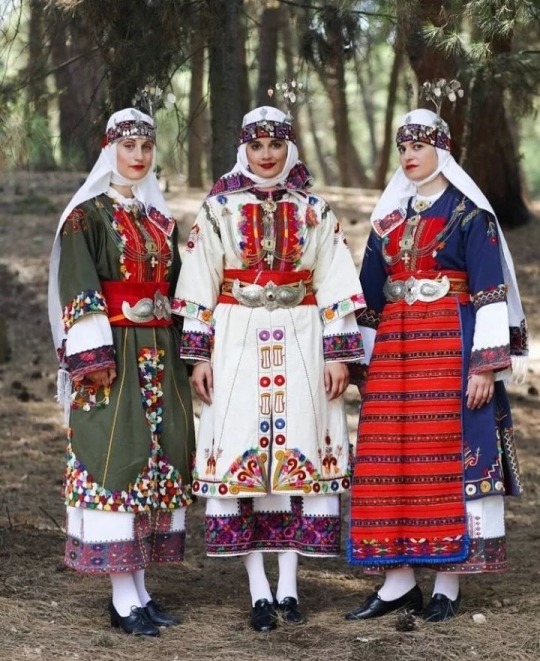
#greece#traditional#folk#greeks#greek culture#aesthetic#greek beauty#greek tradition#traditionalism#tradition#greek folk dress#macedonia#balkans#balkan culture#folklore
37 notes
·
View notes
Photo

Since the winter solstice comes, decided to draw Morena, Slavic goddess of winter, sorcery and death.
According to reconstructed myth, Morena is the wife of the spring god Jarilo, but come winter kills him due to his infidelity, making a house from his bones and turning into a terrible crone, thus precipitating the yearly life-death cycle.
To celebrate the end of winter, there are various rituals throughout the Slavic world which include the drowning or burning of an effigy of Marzanna, recreating the cycle once again.
This particular piece was inspired both by orthodox religious icons and Macedonian folk garments, in particular bridal gowns which seemed appropriate, in this case bridal gowns from Galichnik and Skopska Crna Gora.
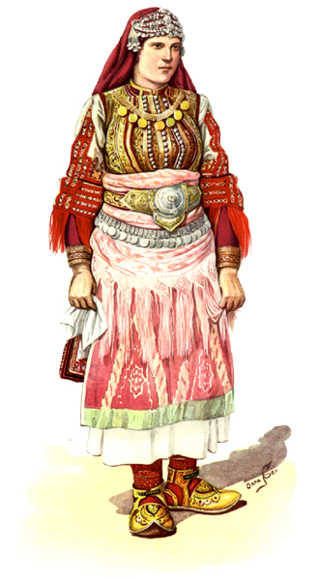

I included the sickle and pine branch as symbols for the seasons, as well as martinki, a seasonal ritual celebrating the end of winter in Macedonia, Serbia, Bulgaria, Romania and Greece.

#morana#morena#marzanna#slavic mythology#winter#winter solstice#slavs#macedonia#folk garment#balkan culture#slavic#slav#girlboss shit#glagolitic
12 notes
·
View notes
Text

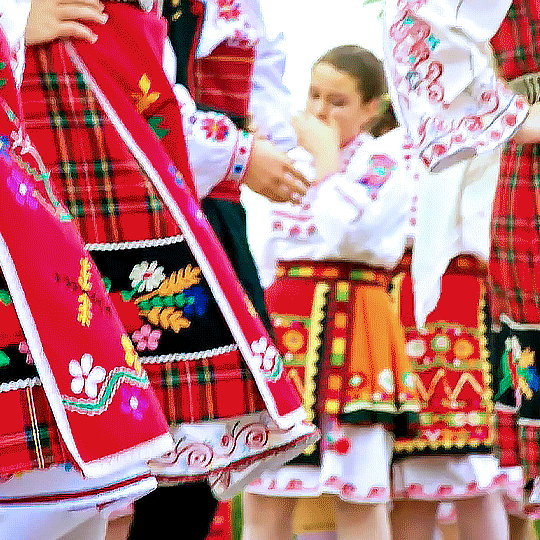



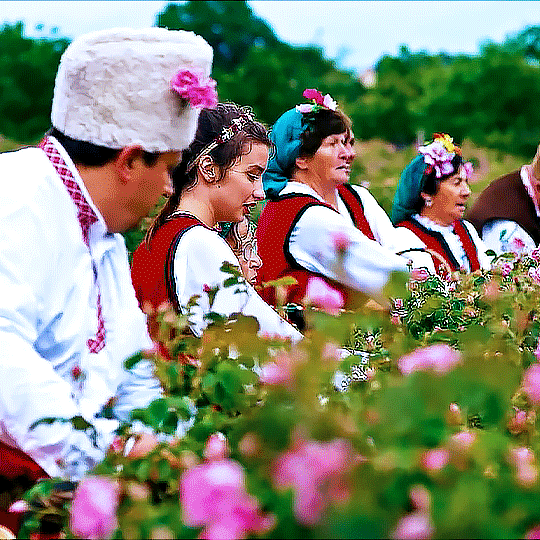

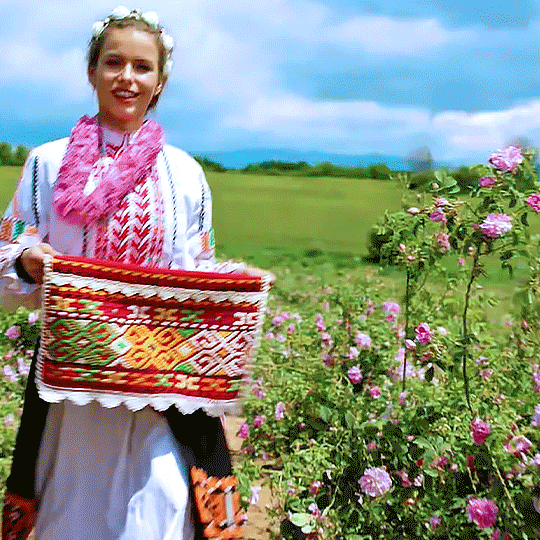

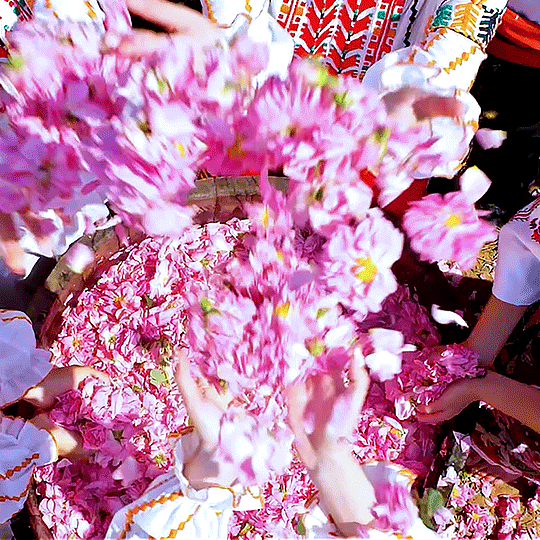
Bulgaria’s Rose Valley & Rosa Damascena: On February 14th, Bulgarians celebrate St Trifon Zarezan (an ancient Thracian holiday rite). Dressed in their traditional best, vine growers prune and sprinkle Bulgarian wine for a good harvest. Then, they gather for a delicious meal.
9 notes
·
View notes
Text

🔸Serbian girl dressed in serbian traditional clothes from Central Serbia 🇷🇸
🔸Time : 1870s
#serbian#balkan#europe#serbian beauty#serbian traditional clothes#serbian folklor#slavic#serbian women#serbian tradition#Serbian culture#Culture#Tradition#Folklor#19th century#19th century Serbia#serbian aesthetic#central serbia#Centralna Srbija#Srbija#Srpkinja#Narodna nošnja
323 notes
·
View notes
Text

Medieval monument found near Prijepolje, Serbia depicting a soldier with spear and halo around his head. Today part of exhibition of museum in Užice, Serbia.
213 notes
·
View notes
Text

*sets down the 94588464th drawing of balkan sapphics at your doorstep* (serbian from sumadija and outskirts of belgrade, respectively)
#balkan#slavic culture#slavic wlw#serbia#eastern europe#south slavic#slavic art#oc#wlw#sapphic#srbija#wlw art#sapphic art#bi wlw
97 notes
·
View notes
Text

ALSO DID YALL NOTICE THE МАРТЕНИЧКИ/MĂRȚIȘOR ON BUL'S CHEST AND RO AND MOL'S HATS
basically мартенички are red/white twisted threads that are given out to friends, relatives, colleagues on 1st of march in bulgaria, it has an ancient balkan pagan origin
in romania, they have mărțișor which is something similar but it's worn mostly by women and kids, men wore it rarely
basically these red/white threads are tied to blooming trees if u see a swallowtail or a stork or a blooming tree, the point of the custom is to bring fortune to the wearer (in bulgaria, there used to be this custom where u put the martenitsa under a big rock and later, you'd look under the rock and make omens based on what ur seeing - types of bugs, worms, etc)
also, interestingly, there's the figure of баба Марта in bulgaria and the figure of baba dochia in romania - they're some sort of temperamental grandmas who can be very cruel, bulgarian baba marta can be angry but she can also quickly become calm and happy, this references the quick weather changes in march
perhaps there was some sort of dacian/thracian elderly female deity that had something to do with fertility, fortune and spring? maybe this is the origin of the holiday?
#hetalia#aph bulgaria#hws bulgaria#hetalia bulgaria#aph romania#hws romania#hetalia romania#balkan#culture#aph moldova#hws moldova#hetalia moldova
87 notes
·
View notes
Text
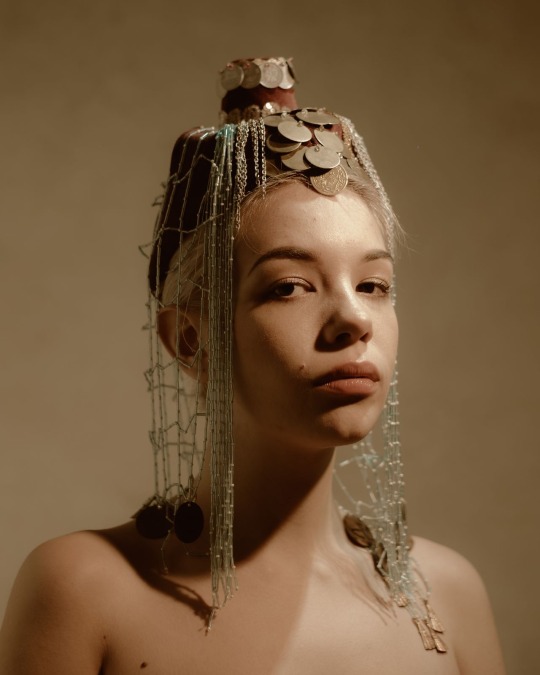

Traditional headwear from Prizren (south Serbia)
#serbia#srbija#personal#photography#photo#traditional clothing#tradition#prizren#slavic#kosovo i metohija#headwear#balkan#narodna nošnja#narodna nosnja#folklore#folklor#culture#heritage
973 notes
·
View notes
Text

the old town in plovdiv
#original photographers#photographers on tumblr#photography#warm aesthetic#sunshine#beautiful photos#architecture#culture#aesthetic#fall aesthetic#autumn vibes#fall vibes#downtown#old town#europe#autumn#cityscape#city photography#city#city life#sunset#beautiful#pretty#bulgaria#plovdiv#street photography#streetscape#balkan#slavic#travel
39 notes
·
View notes
Text
Everyday passing by, Jere is becoming one of the Balkans
#i love it when non balkan people have culture shock with us#but with jere it somehow looks so natural#käärijä#jere pöyhönen#joker out#bojan cvjetićanin
71 notes
·
View notes
Video
Say hi to albanian culture ❤️
#albanian#albania#traditional clothing#wedding costumes#folk#culture#shqiptar#balkan#balkans#costume
138 notes
·
View notes
Text
#poll#slav life#slavs of tumblr#tumblr polls#slavic#slav#slaveni#slavs on tumblr#real slavs#tumblr poll#slav poll#slav culture#slav humor#slav squat#slavs#eastern europe#balkans#the slav poll
229 notes
·
View notes
Text
if they go full balkan on that skam croatia remake i dont think international fans actually know what they're in for 😭
#they gonna be like damn bitch you live like this#culture shock for everyone around#sid text#sid post#skam croatia#skam#balkans
16 notes
·
View notes